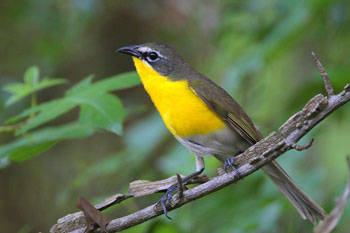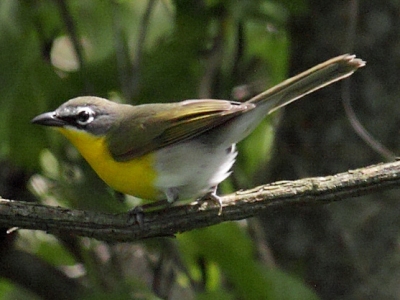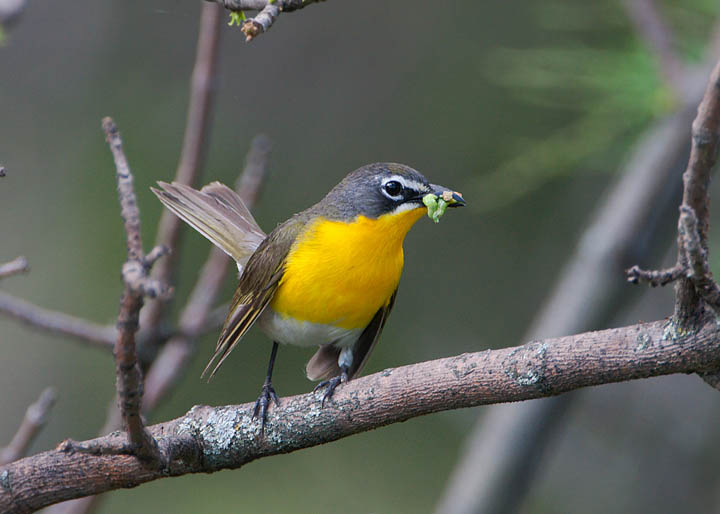
Icteria virens
SUBFAMILY
Parulinae
TAXONOMY
Icteria virens Linnaeus, 1758, South Carolina.
OTHER COMMON NAMES
French: Ictйrie а poitrine jaune; German: Gelbbrust-Waldsдnger;
Spanish: Reinita Grande.
PHYSICAL CHARACTERISTICS
With a length of up to 7.5 in (19 cm), it is the largest wood
warbler. Upperparts are olive, throat and breast are bright yellow,
and the rest of the underside is white. Face is blackish
with a white eye stripe and eye circle, and it sports a plump,
conical bill unlike the typical warbler bill of the family. The female
and male are similar in appearance.
DISTRIBUTION
Breeds from east to west in the United States, north into
southern Canada and south into Mexico. Winters from Mexico
south to Panama.
HABITAT
Prefers to be near water, spending most of its time hidden
among tangles and thickets.
BEHAVIOR
Unlike other warblers that flit among branches, the yellowbreasted
chat takes more of a bull-in-a-china-shop approach—
flopping, falling, and tail-swooning through the thickets. Its
songs, some of which it performs at night, combine a few
melodious bursts interspersed with gobbles, caws, and other
less delicate sounds. It also has been described as a ventriloquist
in that it can throw its voice and fool even experienced
birders.
FEEDING ECOLOGY AND DIET
Mainly insects, but also eats berries.
REPRODUCTIVE BIOLOGY
Cup-like nests rest in the tangles and brambles, and typically
hold up to six brown-and-purple-speckled eggs. More than one
pair may share a nesting site.
CONSERVATION STATUS
Not threatened. Widespread and fairly common.
SIGNIFICANCE TO HUMANS
Song and
BEHAVIOR
provide enjoyment for birders.
Photo Gallery of - Yellow-breasted chat




 Animalia Life
Animalia Life